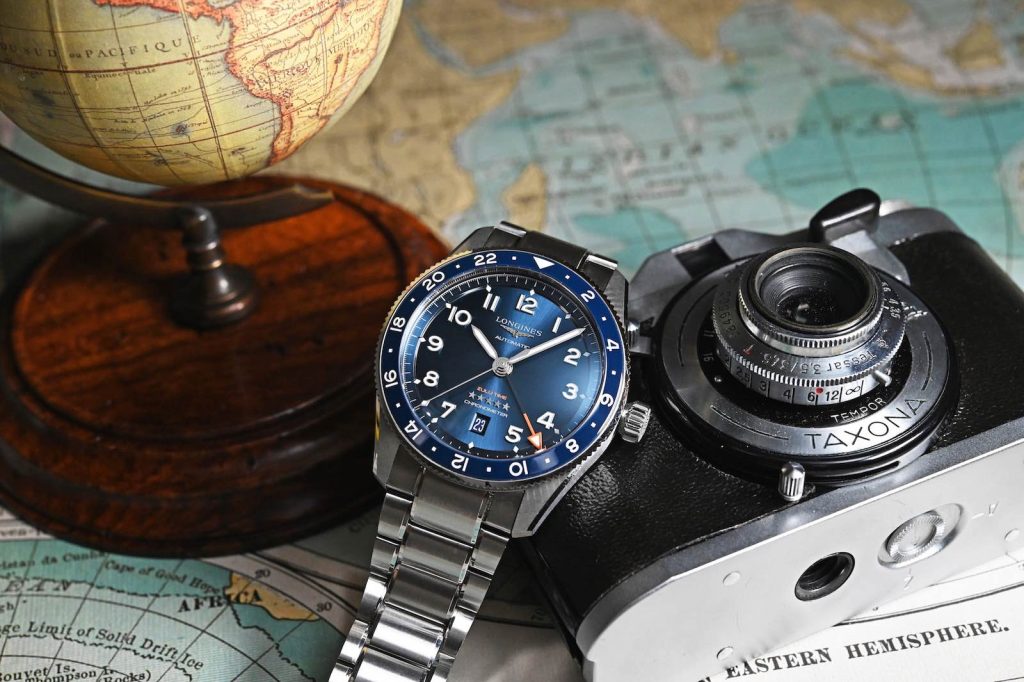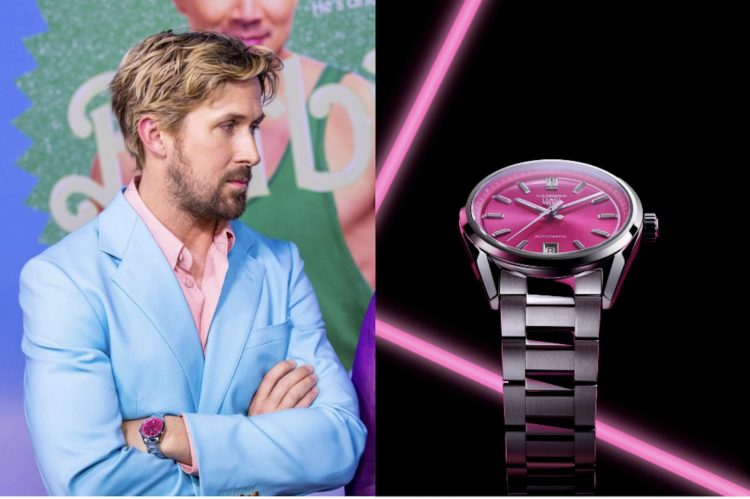Introduction
When it comes to luxury Swiss watchmaking, few names are as respected as Tag Heuer and Longines. Both brands have etched their legacies in the annals of horology, yet they have done so in distinctly different ways. Tag Heuer, founded in 1860, is renowned for its groundbreaking chronograph technology and close association with motorsport. Longines, on the other hand, established in 1832, has long been synonymous with elegance, refinement, and precision, becoming a fixture in aviation and equestrian sports.
While both are pillars of Swiss watchmaking, they cater to slightly different niches in the watch industry. Tag Heuer’s reputation is anchored in its innovative approach to performance-oriented timepieces, while Longines is celebrated for its classic designs and commitment to precision timekeeping.
In this article, we will explore both brands in depth, comparing their histories, legacies, and cultural impacts, and ultimately examine which brand has had the more influential and lasting presence in the world of horology.
Chapter 1: Tag Heuer – A Legacy of Innovation and Performance
1.1 Origins of Tag Heuer: Founding and Early Years
Founded in 1860 by Edouard Heuer in St-Imier, Switzerland, Tag Heuer started as a small workshop producing precision chronographs. Heuer’s early innovations were instrumental in the development of accurate timing systems for sports events. In fact, the company’s first breakthrough came in 1887 when it introduced the oscillating pinion, a revolutionary mechanism that allowed for more accurate stopwatch functions—an innovation that would go on to shape the world of sports timing.
In the early 1900s, Tag Heuer became the first company to produce a water-resistant chronograph and began catering to aviators, racing drivers, and adventurers—professions where precision and performance were paramount.
1.2 Tag Heuer and Motorsports: A Pivotal Moment
The defining moment in Tag Heuer’s history came in 1963 with the launch of the Carrera chronograph. This model, designed specifically for professional race car drivers, encapsulated the brand’s commitment to both precision and performance. The Carrera quickly became iconic, a perfect blend of functionality and design. It was named after the Carrera Panamericana, a dangerous Mexican road race, highlighting Tag Heuer’s close association with motorsports.
In the 1970s, Tag Heuer further solidified its place in motorsports when Steve McQueen wore the Monaco chronograph during the filming of Le Mans. This movie, which is set in the world of Formula 1 racing, became a cultural phenomenon, propelling both McQueen and Tag Heuer into the spotlight.
Throughout the decades, Tag Heuer has forged strong partnerships with Formula 1, IndyCar, and other high-performance sports, making it one of the most recognized names in the motorsport world. Tag Heuer’s role in motorsport culture remains strong, with the brand continuing to sponsor top racing teams and athletes.
1.3 Tag Heuer’s Technological Innovations
One of Tag Heuer’s key pillars has always been technological innovation. The company has consistently pushed the envelope in terms of both design and engineering. The introduction of automatic chronographs, including the Caliber 1887, was a significant leap forward for the brand. This movement was developed entirely in-house and has become a hallmark of Tag Heuer’s commitment to in-house mechanical movements.
In recent years, Tag Heuer has also ventured into the world of smartwatches, with the launch of the Tag Heuer Connected series. These luxury smartwatches combine the elegance of traditional timepieces with modern smartwatch technology, allowing the brand to reach a new generation of tech-savvy consumers.
1.4 Tag Heuer’s Branding and Marketing
Tag Heuer’s branding is built around the notion of performance under pressure. The company’s “Don’t Crack Under Pressure” slogan captures the essence of what Tag Heuer stands for—resilience, speed, and precision. The brand has always aligned itself with high-octane, fast-paced industries like motorsport, further cementing its image as a timepiece for those who live life at full speed.
Celebrities like Cristiano Ronaldo, Brad Pitt, and Cara Delevingne have served as ambassadors for the brand, further linking Tag Heuer to contemporary luxury and performance. The company’s heavy presence in social media and digital marketing has allowed it to stay relevant in the digital age, engaging with younger audiences through influencer partnerships and innovative campaigns.

Chapter 2: Longines – A Tradition of Elegance and Precision
2.1 The Birth of Longines: A Heritage of Excellence
Founded by Auguste Agassiz in 1832, Longines is one of the oldest watchmaking companies in the world. Its history is deeply rooted in Swiss craftsmanship, and from the very beginning, the company was committed to creating precision timepieces. Longines was one of the first companies to produce a pocket chronograph, a feat that helped establish the company as a leader in sports timing.
Unlike Tag Heuer, which initially gained recognition for its sports timing and motorsport affiliations, Longines positioned itself as a brand synonymous with elegance, precision, and tradition. The company’s association with aviation and equine sports further helped cement its reputation as a brand of sophistication and performance.
2.2 Longines and Aviation: The Pioneering Spirit
One of the most important chapters in Longines’ history is its involvement with aviation. The brand’s timekeeping expertise was essential to many pioneering aviators in the early 20th century, including Charles Lindbergh, who famously flew solo across the Atlantic Ocean in 1927. Longines became a trusted brand for pilots, developing aviation-specific timepieces that helped ensure accuracy and precision in flight.
The Longines Lindbergh Hour Angle Watch was one of the most significant innovations of the era. It allowed aviators to calculate their position during flights, combining the precision of Longines’ movements with practical application for pilots.
2.3 Longines and Equestrian Sports: A Commitment to Grace
While Tag Heuer was forging its identity in the high-speed world of motorsport, Longines was making its mark in equestrian sports, where grace, precision, and tradition are highly valued. Longines has been the official timekeeper for many prestigious horse racing events like the Prix de Diane, Royal Ascot, and the Dubai World Cup.
The brand’s long-standing association with equestrian sports and its sponsorship of high-profile events further exemplify its commitment to elegance and refinement. The Longines Elegance Award, which recognizes women for their contributions to culture and society, reflects the brand’s dedication to promoting the values of grace, sophistication, and timeless beauty.
2.4 Longines’ Technological Advancements
Despite its reputation for elegance, Longines has not been shy about incorporating cutting-edge technology into its timepieces. The brand has introduced a number of high-tech innovations over the years, including the Longines Master Collection and the Longines V.H.P. (Very High Precision) watches, which are among the most accurate quartz timepieces in the world.
In addition to quartz precision, Longines has developed mechanical chronographs and diver’s watches that boast incredible durability. The brand’s use of advanced materials such as ceramic and titanium in certain collections ensures that Longines watches remain relevant in a competitive, high-performance market.
2.5 Longines’ Branding and Marketing
While Tag Heuer’s branding is centered on high-speed, adrenaline-fueled performance, Longines’ marketing focuses on timeless elegance and sophistication. The brand’s tagline, “Elegance is an attitude”, captures the essence of its identity—grace, refinement, and precision.
Longines’ ambassadors, such as Aishwarya Rai Bachchan, Simone Biles, and Kate Winslet, reflect the brand’s focus on elegance and class. Longines has also been adept at blending its heritage with modern appeal, using digital platforms and social media to reach a younger audience while maintaining its strong ties to traditional luxury.
Chapter 3: Comparing the Brand Histories of Tag Heuer and Longines
3.1 The Origins and Evolution
- Tag Heuer: Founded in 1860, Tag Heuer initially focused on precision chronographs. It grew rapidly due to its deep ties to motorsports, aviation, and sports timing, becoming synonymous with high-performance, cutting-edge technology.
- Longines: Established in 1832, Longines has always been defined by its elegance and refinement, with early expertise in precision timekeeping and a strong association with aviation and equestrian sports.
3.2 Cultural and Technological Impact
- Tag Heuer: The brand’s influence is deeply tied to motorsport culture, where it has become a symbol of speed, precision, and innovation. Tag Heuer’s technological innovations, such as the chronograph and automatic movements, have been crucial to its success.
- Longines: While it hasn’t been as involved in high-adrenaline industries, Longines has carved out a niche in the world of high society, aviation, and equestrian sports, where its timepieces are prized for their accuracy and timeless elegance.
3.3 Which Brand Has the Richer Legacy?
Determining which brand has the “richer” legacy is subjective and depends largely on what aspects of horology are most important to the individual. Tag Heuer’s legacy of technological innovation and performance makes it the perfect choice for those who appreciate cutting-edge advancements and motorsport culture. Longines, with its deep ties to traditional Swiss craftsmanship and its association with elegance and precision, is a go-to for those who value classic sophistication and timeless design.
Conclusion
Both Tag Heuer and Longines have left indelible marks on the world of Swiss watchmaking, but in very different ways. Tag Heuer’s emphasis on performance, innovation, and motorsport culture has made it an icon in the world of high-speed sports, while Longines has cultivated a legacy of grace, elegance, and precision that appeals to a more traditional luxury audience.
Choosing between these two historic brands ultimately comes down to personal preference and what you seek in a timepiece—whether it’s cutting-edge performance or timeless elegance. Both brands continue to evolve, maintaining their relevance while staying true to the rich histories that define them.





































